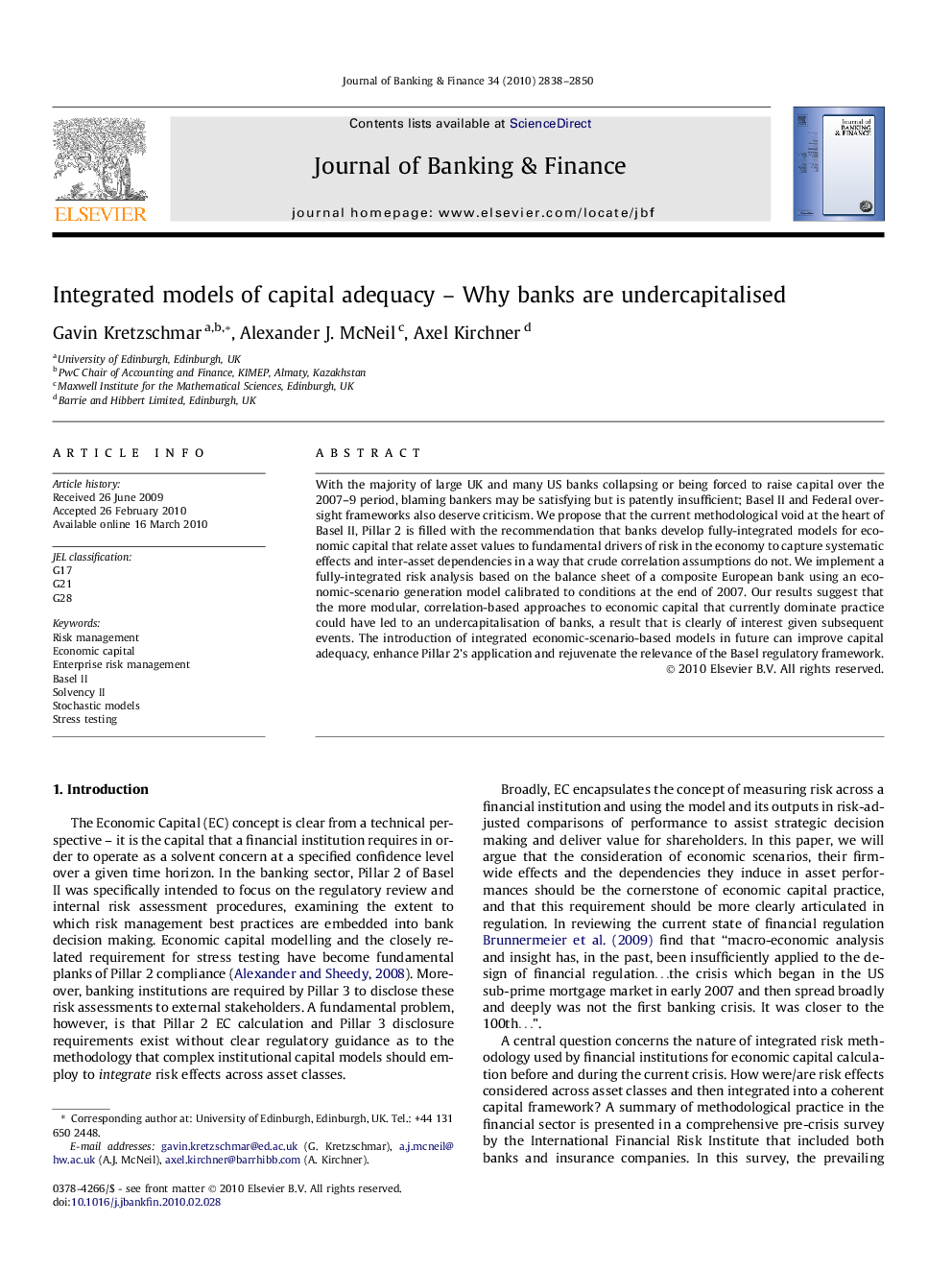| Article ID | Journal | Published Year | Pages | File Type |
|---|---|---|---|---|
| 5090191 | Journal of Banking & Finance | 2010 | 13 Pages |
Abstract
With the majority of large UK and many US banks collapsing or being forced to raise capital over the 2007-9 period, blaming bankers may be satisfying but is patently insufficient; Basel II and Federal oversight frameworks also deserve criticism. We propose that the current methodological void at the heart of Basel II, Pillar 2 is filled with the recommendation that banks develop fully-integrated models for economic capital that relate asset values to fundamental drivers of risk in the economy to capture systematic effects and inter-asset dependencies in a way that crude correlation assumptions do not. We implement a fully-integrated risk analysis based on the balance sheet of a composite European bank using an economic-scenario generation model calibrated to conditions at the end of 2007. Our results suggest that the more modular, correlation-based approaches to economic capital that currently dominate practice could have led to an undercapitalisation of banks, a result that is clearly of interest given subsequent events. The introduction of integrated economic-scenario-based models in future can improve capital adequacy, enhance Pillar 2's application and rejuvenate the relevance of the Basel regulatory framework.
Keywords
Related Topics
Social Sciences and Humanities
Economics, Econometrics and Finance
Economics and Econometrics
Authors
Gavin Kretzschmar, Alexander J. McNeil, Axel Kirchner,
